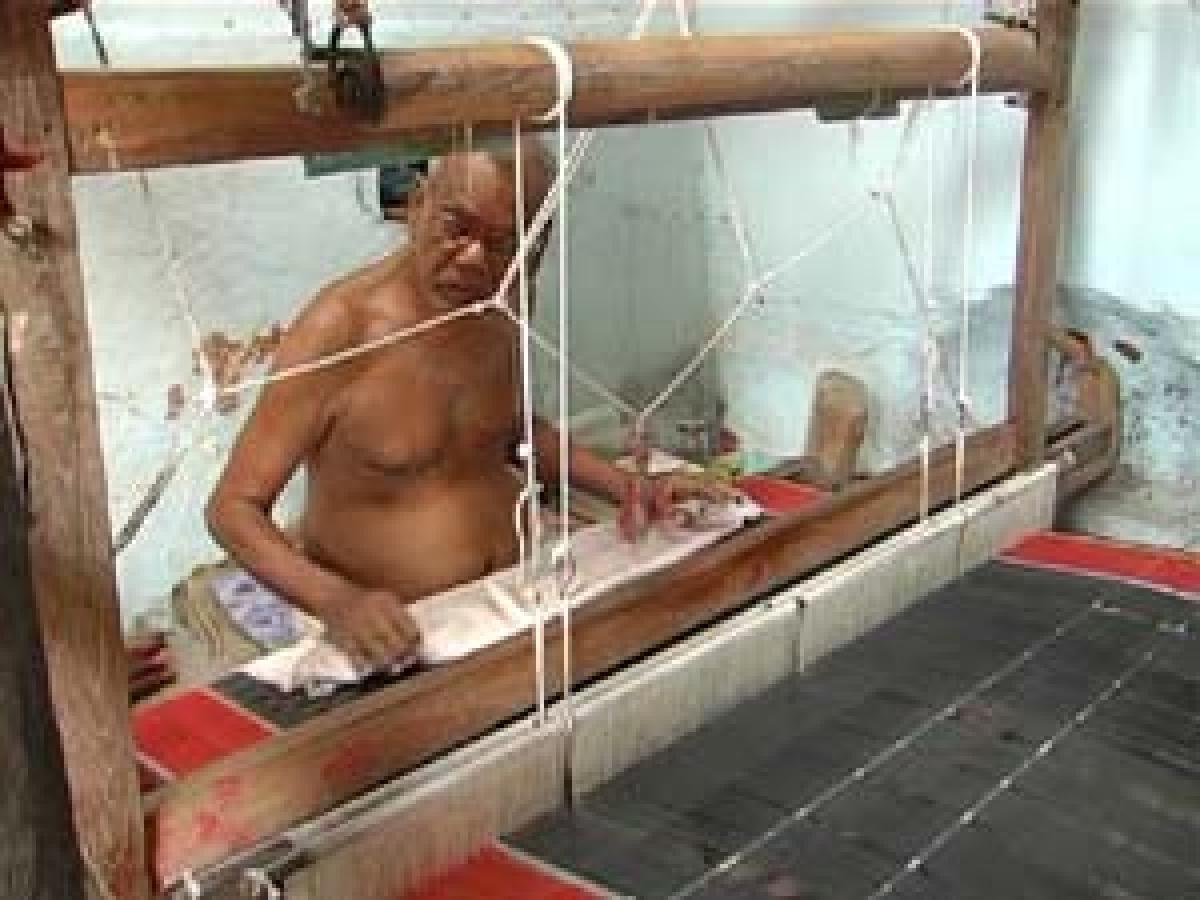Live
- Unveiling the Hidden Gems: Surprising Health Benefits of Garlic Peels
- Overcoming Sleep Struggles: A Comprehensive Guide to a Restful Night
- RTC bus hit the auto
- MLA Kuchukula Rajesh Reddy participated in the Birappa festival
- DMHO starts awareness campaign on Malaria
- World Intellectual Property Day 2024: Date, History, Significance, and Everything You Need to Know
- Shiv Sena-UBT manifesto assures dignity to all states; ‘no’ to polluting nuclear, refinery mega projects
- IPL 2024: Delhi Capitals sign Gulbadin Naib to replace injured Mitchell Marsh
- Delhi court grants 30-day extension to police to conclude probe in Parliament security breach case
- Cash, liquor, drugs valued at Rs 321 crore confiscated in Punjab
Just In

Clothes protect us from the vagaries of the weather. We are able to bear the heat, chill, wind or rain by wearing suitable form of clothing. Colourful clothes make us appear more beautiful, thanks to the fashion designers of today.
Medicinal cloth cares for people, environment
Weavers of Pochampally, Puttapaka and Koyyalagudem are now weaving cloth using yarn dyed with natural dyes that have medicinal properties
Nalgonda: Clothes protect us from the vagaries of the weather. We are able to bear the heat, chill, wind or rain by wearing suitable form of clothing.
Colourful clothes make us appear more beautiful, thanks to the fashion designers of today.
But do you know that cloth made of natural dyes has medicinal properties? Do you know they are beneficial to your health? Our weavers are now adopting some of the prescribed ayurvedic methods for preparing dyes that promote health and also peace of mind.
Several researches have shown that natural dyes when applied to cloth give us health and peace of mind. These dyes are extracted from herbs, flowers, pods, seeds and tree barks. Medical tests have long back revealed that wearing chemically-dyed cloth is causing skin diseases.
As a result, there has been a demand for naturally dyed cloth. The weavers of Pochampally, Puttapaka and Koyyalagudem are now weaving cloth using yarn dyed with natural dyes that have medicinal properties.
According to weaver of aryurvedic cloth Karnati Narasimha, artisans are using natural colours obtained from trees, vines, leaves and tree barks to produce the fabric. In fact, the world famous indigo was found in India. It is a byproduct of a tree. An ingredient used in pan katha in Hindi (Catechu is an extract of acacia trees used variously as a food additive) it gives a brown colour to cloth.
Red sanders wood extracted dye lends red colour where as dried Moduga (Bastard Teak) flower, chrysanthemum and kusuma flowers lend yellow colour, Henna, neem and guntagalagaraku (Bhringraj leaves) lend green colour to the cloth. Jaffra, red sanders powder and chavalkudi bring on saffron. Tree barks and used tea powder can give coffee colour to the cloth.
According to a worker Narayana, barks of pomegrantate, karakkaya, maachikaya, manjishta (Rubia cardifolia), modugupulu, tumma (Indian gum) trees are useful in making ayurvedic cloth. A team from Malaysia visited Koyyalagudem to conduct research on natural dyes. If iron and jaggery are mixed and stored for sometime, a black colour can be got.
The Malaysian team observed that the dyeing process is environmental friendly. To make a 25-meter cloth using the chemical process takes one day, but to make the same length of Ayurvedic cloth requires at least 15 days.
According to a weaver Mangamma, It will take at least three weeks to apply natural dyes to cloth. The yarn used to weave the cloth will be soaked in water mixed with salt. The water used should be non alkaline. The next day the yarn will be boiled in hot water for four hours mixing non-detergent soap and baking soda. The third day the yarn is cleaned and dried in the open under shade.
Once the yarn becomes dry, it is again soaked in water mixed with alum which is known as anti-septic. Later, it will be dried under shade. The same process is repeated three or four times. The yarn which has thus acquired medicinal qualities should be dyed using dyes extracted from flowers, pods, vines and tree barks. The dyeing process will take at least 10 to 15 days.
Weavers from these regions have proved their specialty in making cloth using natural dyes. Some of the weavers have undergone training in application of natural dyes through Dastakar Andhra. The natural dyes are purchased from ayurvedic shops in Hydeabad and are prepared for application. Saris, chunnis, dress material is being manufactured using ayurvedic preparations.
This cloth is being exported to Canada. The quality of dyes is very good and the cloth lasts long. Some organisations have given orders in bulk for this medicinal cloth. The medicinal cloth keeps body cool in summer and warm in winter. It protects body from bacteria.
The water mixed with natural dyes even if it seeps into the soil, there will be no harm to the environment. That is why the use of natural dyes should be increased and extensive sales campaign to market the naturally dyed cloth should be launched, says weaver Narayana.
By B Ashok

© 2024 Hyderabad Media House Limited/The Hans India. All rights reserved. Powered by hocalwire.com







